Non-Extraction Orthodontic TMJ Treatment – Portland, OR
We Begin with the End in Mind
Dr. Teasdale began practicng non-extraction orthodontics because he could not find an orthodontist who was willing to treat patients without removing otherwise healthy teeth (possibly excepting only wisdom teeth removal). And he is still committed to doing so 100%.
The removal of otherwise healthy teeth is a principal cause for TMJ and airway issues, and it also collapses the lower face. It places teeth in an unnatural position that restricts the lower jaw and locks the lower jaw back. This is why the orthodontists routinely tell the patient they will require retainers for the rest of their lives. But teeth that are in the natural position are more stable, less sensitive, and properly support the lower jaw, which gives balance to the entire body. It makes life better in every way.
At Evolution Dental, we believe in creating space by growing the upper arch, and enabling the lower jaw to position itself in an optimal bite. We work with what nature has designed for your lifetime of comfort, beauty, and function. We take the time to do it right the first time so that you can appreciate it for years to come.
Why Choose Evolution Dental for Non-Extraction Orthodontic TMJ Treatment?
- TMJ Dentist with Over 40 Years of Experience
- Certified Elite Invisalign Provider
- Accelerated Orthodontics Cut Treatment Times in Half
We Won't Defile Your Profile
There is only one reason that orthodontists routinely recommend the removal of otherwise healthy teeth, and that is to make room to align the remaining teeth more quickly. It is almost never done with the future comfort and function of the patient in mind, or at heart. Because nature intended and designed you for a full set of teeth, and your muscles, TMJs, airway, and tongue are all designed to work with that number of teeth. When you randomly alter one leg of a five-legged stool, it becomes unstable, and we all know the unhappy consequences of instability.
Truth be told, it is very straightforward to create space for teeth, even when they appear tightly packed together, just by expanding the upper arch. We have done that, with great success, for 30 years. It is a straightforward and predictable process, involving no needles or numbing, and in the end, the total treatment time is on par with extraction orthodontics.
There was a time when orthodontists believed that you could not widen the upper arch, just like engineers once were convinced that bumblebees (much less airplanes) could not fly. Both were wrong, but the engineers admit it.
The key is to recognize that if there is less space than teeth in the upper arch, you can either decrease the number of teeth or expand the arch. But decreasing the number of teeth also shrinks the arch, and the teeth are shifted inward, creating a "dished in" profile, and predisposing a person to a lifetime of TMJ pain and dysfunction. This is because it throws the entire delicate balance between the muscles, teeth, tongue, and the TMJ out of kilter. The jaw is generally pushed back, off the disk in the joint, and can cause ringing in the ears, dizziness, and even partial loss of hearing. The muscles fight, day and night, to hold the jaw where the teeth force it, and they become overworked and painful. Headaches ensue from the overworked muscles, and the picture just gets increasingly bleak.
Expansion of the upper arch is admittedly easier and faster at younger ages, but we have successfully "grown" the palate in octogenarians. And, as the saying goes, "If it’s been done, it is probably possible."
Once there is adequate room for the teeth in the upper arch, merely straightening and aligning them is relatively quick and easy, very often using Invisalign-type clear aligners. And you wind up with a result that is in every way preferable — esthetically, functionally, and comfort-wise. Plus, the number of huge problems sidestepped cannot be overstated.
Traditional orthodontists believe you can only move teeth through bone (which, in fact, is the very definition of "Ortho-dontics"). But it is also possible to "grow" bone, an "Orthopedic" movement, and in doing so, the options for treatment expand immensely.
Correcting Bite Misalignment
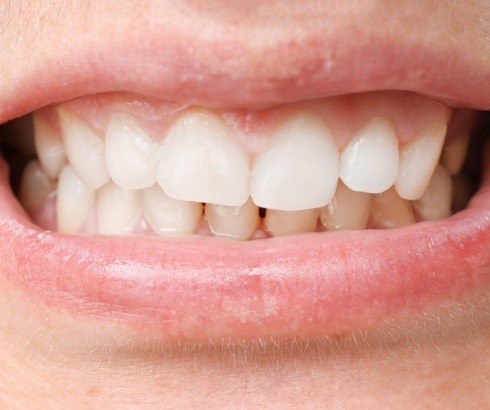
At Evolution Dental, we look beyond the front teeth, because the long-term success of each orthodontic treatment depends more on the position of the back teeth and how they fit and function together. It is relatively easy to do a quick fix on the front teeth, but if the bite is ignored, the chances are great that the teeth will shift back to where they were.
If you have been told:
- You need to have teeth extracted to have them straightened.
- You will have to wear headgear.
- TMJ disorder (TMD) and teeth grinding are not related to your bite.
- Your teeth are too big for your arch.
- Braces are your only option.
- You will need to wear a retainer for the rest of your life.
- Straight teeth are not related to whole-body diseases.
- You are too old to benefit from straight teeth.
- You are not a candidate for Invisalign®.
...then we need to talk.
Simply put, we love broad, happy smiles with full, well-supported lips, comfortable joints, relaxed muscles without grinding, and teeth arranged to last a lifetime. Read below to learn about the different services we offer for non-extraction orthodontic TMJ treatment in Portland.
Traditional Braces
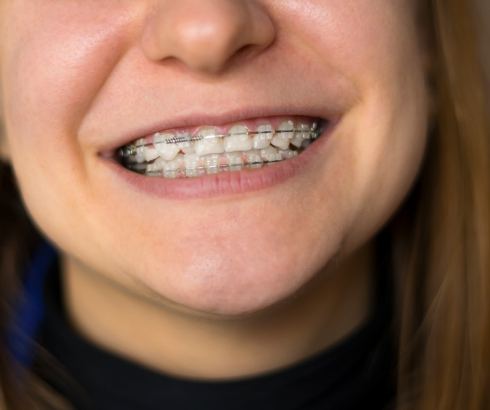
If you are looking for a reliable way to straighten your teeth, balance your bite, and reduce TMJ pain, traditional orthodontics have been proven over and over again to do just that. Fortunately, braces have made many advancements over the years. The brackets these days are much smaller than in the past, which equates to more comfort for the patient. With them, Dr. Teasdale can help you achieve a more functional and esthetically pleasing smile you can trust will stand the test of time.
Learn More about Traditional Braces
Invisalign® Clear Braces
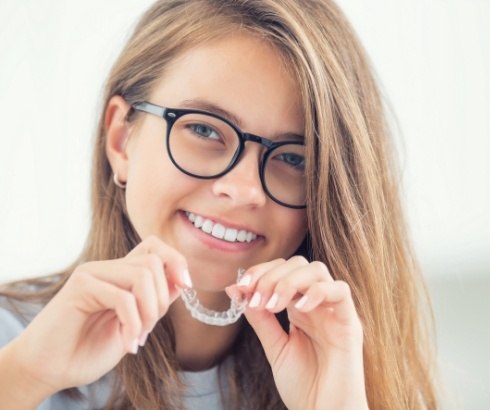
As a more modern alternative to traditional braces, Invisalign clear braces are essentially invisible when worn and can get you the same results without impacting your lifestyle. These clear alignment trays are removable, allowing you to continue eating your favorite foods and doing your normal daily oral routine. This simple system can transform your smile without having to sacrifice your appearance during treatment and is much more comfortable than traditional braces.
Do Clear Aligners Work for TMJ Disorder?
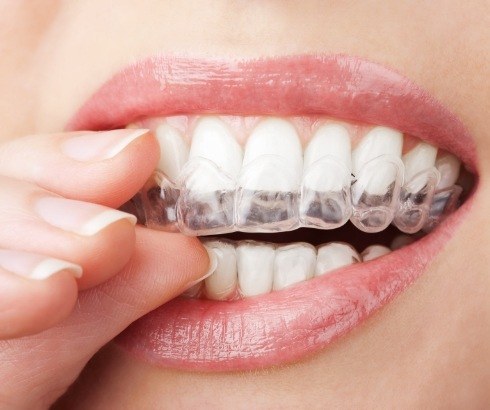
Obviously, options like Invisalign work very well, in the proper circumstances. So do braces. And although each of these has its advantages and drawbacks, either can move teeth into a proper bite.
The primary problem comes if there is not adequate space available for the teeth to move. In that instance, we need to expand the jaw, so that everything fits. You could work all day, for instance, to try to force a golf ball into a juice glass, and never succeed. But you can drop it instantly into a coffee cup. If you have adequate room for the teeth to move, they will move faster and better, and everyone wins.
Propel®
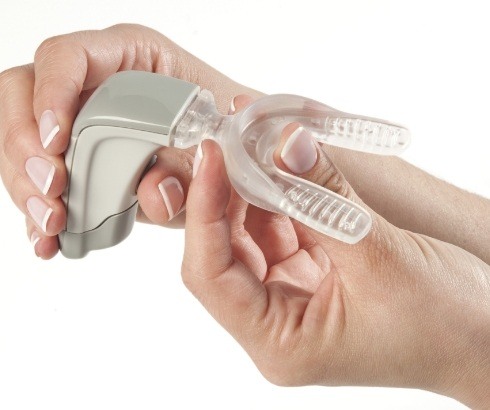
Whether you choose traditional braces or Invisalign, the treatment timeline can feel long. To speed up the results, we might use Propel®, a revolutionary device that supplements your orthodontic treatment by creating micro-perforations in the jawbone. This allows Invisalign or braces to work much faster. It is applied right here in our dental office, and it causes very little discomfort, but can have a dramatic effect on your treatment.
AcceleDent®
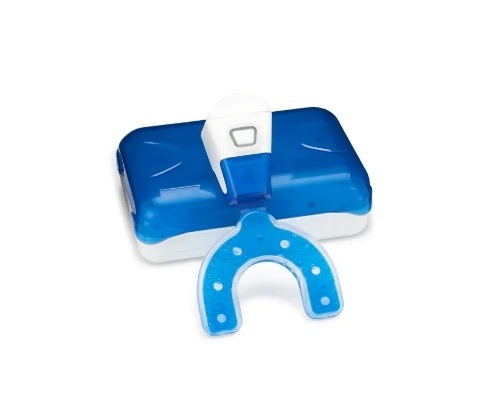
As the name suggests, AcceleDent® accelerates the time needed by Invisalign or traditional braces to straighten the teeth. This device is placed into the patient’s mouth where it delivers micro-vibrations. These stimulate the bone remodeling process that enables your teeth to move into the desired positions. This facilitates your teeth’s alignment and makes your treatment go much faster. You can use AcceleDent at home for just 20 minutes every day for optimal results.
VPro5
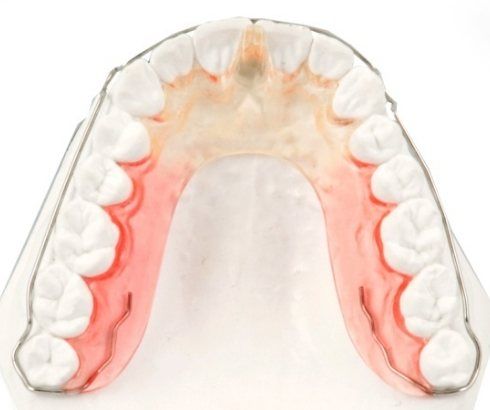
Sometimes, Invisalign aligners do not fit perfectly. Instead of adjusting the aligners and prolonging your treatment, you can use the VPro5. This device delivers gentle vibrations to help move teeth faster and more easily. It is portable, only needs to be used for 5 minutes every day, and helps resolve aligner issues for a more comfortable, effective fit. By using the VPro5, you can move through your series of aligners much faster, bringing you closer to your desired results ahead of schedule.
Kois Deprogrammer
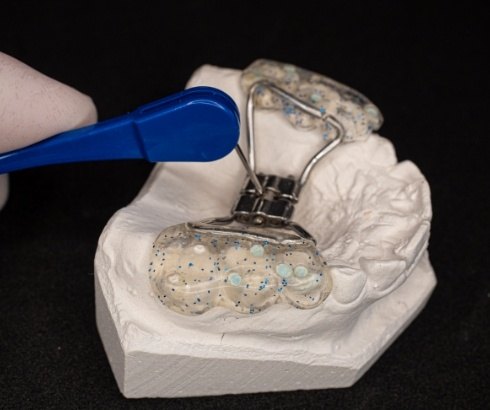
When your bite is misaligned, otherwise known as an abnormal occlusion, your muscles can keep your jaw in a less than ideal position. The Kois Deprogrammer is a removable plastic appliance that creates just one point of contact between the top and bottom teeth, allowing your jaw muscles to “relearn” a different position. Patients typically need to wear this appliance between one week and one month, and Dr. Teasdale will provide specific instructions for your unique case.
Palatal Expansion
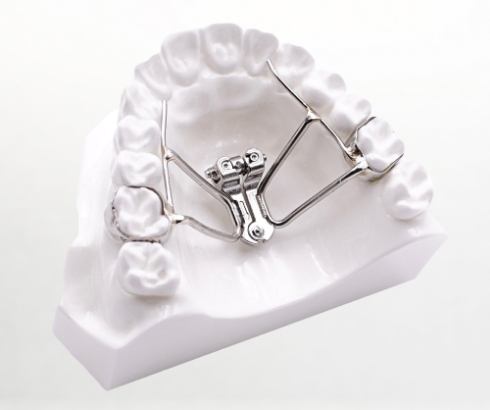
Sometimes, a patient’s palate is too small to fit all of their teeth in their arch. In this instance, we may use what is called a “rapid Palatal Expander” to orthopedically expand the palate, and in so doing, create enough space for all the teeth to fit comfortably. We can grow the palate not only wider side to side, but also forward and create room for the lower jaw to slide forward, to where it naturally would want to be.
In addition, for those who have a hard time breathing through their nose, when we expand the palate, we also create more room in the maxillary sinuses, which enables better breathing through your nose. That is because the other side of the palate is the floor of the sinus, and “one man’s ceiling is another man’s floor.”
Active Appliances
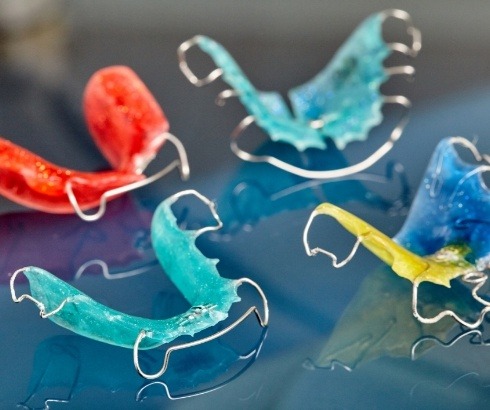
Certain types of orthodontic appliances are intended to keep the teeth still, like a retainer, but others are designed to move them in a specific way. These are called active appliances, and they are often used prior to braces or Invisalign to address specific problems in the teeth and bite. An active appliance may increase the size of the hard palate in order to prevent crowding, while braces or Invisalign is used to close a gap between the back teeth and to align the rest of the smile. These appliances can often accomplish in a matter of months what would take braces years to do, shortening a patient’s overall treatment time.
Mythbusters #1 – “My Orthodontist Says I Got My Father’s Teeth & My Mother’s Jaw”

It is funny, but it is certainly not true. Nature somehow makes sure of that. That's why, if you cross a poodle with a sheepdog, or a retriever, or any dog, you will not get a "blend" of their mouth and teeth. Indeed, modern man is the only animal on earth with orthodontic problems, and those arise largely from early growth environmental factors.
Don't just trust us, but look at your pet's mouth. They might get decay or gum issues (due largely to their domestic lifestyle), but their teeth are always perfectly aligned. Doesn't matter if it is a dog or a cat or a horse or a cow, or a tiger or a hippopotamus (for those of us with unusual pets), their teeth will be compatible with their jaws.
Mythbusters #2 – “I Have to Wear My Retainers for the Rest of My Life or My Teeth Will Move”
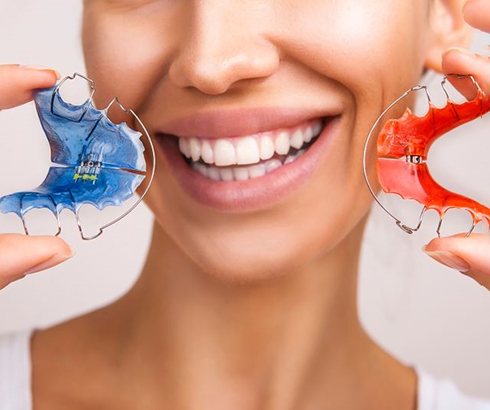
OK, so some things just make no sense at all. This is one of them.
Teeth move, like anything else, in response to force. You put a rock on its end on a busy street, and there are all sorts of forces that will work to knock it over, from cars to wind to vibrations; it will not be in the same place in five minutes. Put the same rock on the moon, and it will likely be standing in the same place for near eternity — Newton’s Law, you know.
Retainers are used long-term to combat natural forces that are trying to move the teeth out of the way. Your lower jaw feels constricted and wants to move where it is. The tongue is trying to get room to function. Wisdom teeth are coming in and trying to push other teeth out of the way. We at Evolution Dental see it every day, or at least on the days we are open.
If the teeth are where they want to be, if they do not displace the tongue, or the lips, or work against where the jaw and the muscles want to be, they will not move. If they want to move, it is an indication that forces were not accounted for when the orthodontic treatment was done, and the retainers are merely a way to shift responsibility to the patient from the orthodontist.
We use retainers but ask the patients to taper off wearing them, to the extent that they might try them every week or month, just to confirm that the teeth are not trying to move. So, the "retainers" become "checkers,” so if the teeth are trying to move, we can figure out why and correct the problem — not just to mask symptoms.
